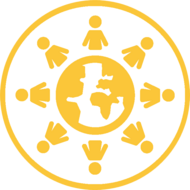Washington Student Climate Assembly: Climate Change in the Civics Classroom
(View Complete Item Description)The Student Climate Assembly (SCA) curriculum equips students with the knowledge and skills to engage meaningfully with climate change by integrating social studies and science for a holistic understanding of its social, economic, political, and environmental impacts. It aligns with Washington state civics standards, teaching students about government structures and local climate action plans. Through critical analysis, recommendation writing, and advocacy, students learn to influence climate solutions.Key themes include civic engagement, climate justice, governmental responsibility, scientific understanding, and tribal perspectives. These elements empower students to participate in democratic processes and advocate for inclusive, effective climate policies.
Material Type: Interactive, Lesson, Lesson Plan, Teaching/Learning Strategy




















